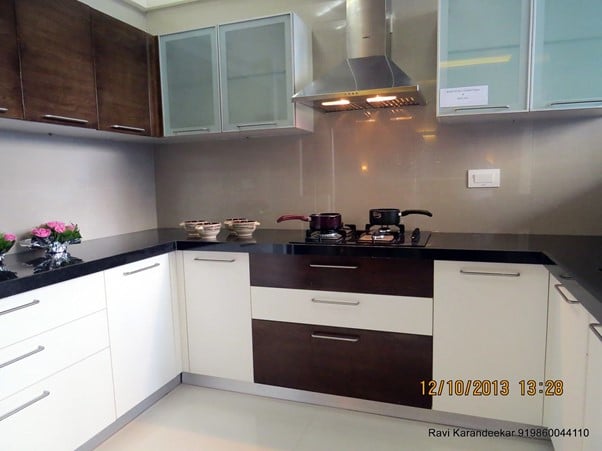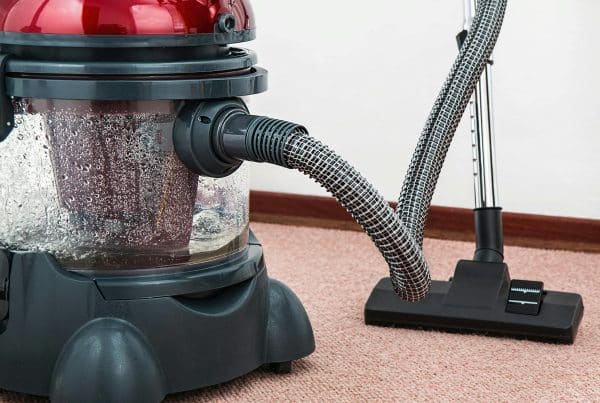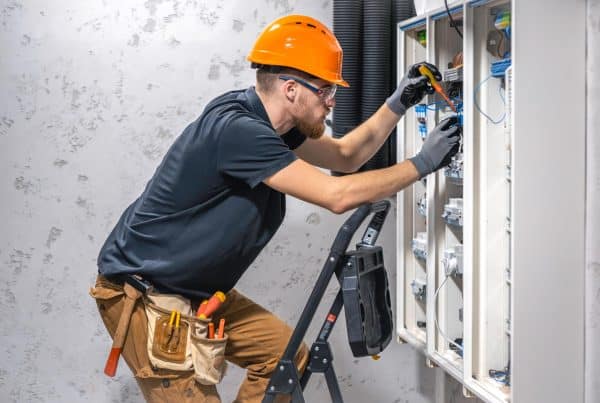When you are cooking in the kitchen, it is inevitable that at some point you will have to clean a stovetop. It can be frustrating and time consuming if the mess is not easily removed with a quick wipe of some soapy water. So, what do you do? You get out your vacuum cleaner or broom and dustpan and spend an hour cleaning up all those crumbs!
A much better solution would be to buy a kitchen chimney – also called an exhaust fan. A kitchen chimney doesn’t just make for easier clean-up; they keep your home free from any unwanted smells too! But what is a chimney?
How do you know if you need one? And where should you buy it? In this article we will answer these questions and more so that you have all the information needed when purchasing your next chimney!
What is a Kitchen Chimney?
A Kitchen Chimney is a vent that typically sits over an electric appliance such as a stove. This kitchen chimney helps to pull up the smoke and steam from cooking so that they do not stay in the air and become trapped in your kitchen.
This will clean up cooking materials on the stovetop, as well as prevent odours from being embedded into furniture or carpets.
A Kitchen Chimney has two ends: the ‘inlet’ end, which is mounted on the appliance, and the ‘outlet’ end which is attached to an opening outside of your house.
Types of Kitchen Chimney:
There are three main types of kitchen chimneys on the market today. They all work in similar ways, but each have their own pros and cons which will depend on your needs. Here they are!
A Vertical Chimney:
This is one of the most popular styles because it has a sleek appearance. It is made up of a long tube which attaches to your stove and has an outlet at the top for airflow. This can be easier than other models because it doesn’t require any extra space outside your kitchen or near windows
A Horizontal Chimney:
The chimneys come in either left-hand or right-hand models. These are very similar in appearance to the vertical chimney, and can be a great option for those who live in smaller apartments
A Hood Chimney:
This type of kitchen chimney is often found over restaurant stoves because they provide more ventilation than other options. The hood covers your stovetop from all angles so that there is less chance of steam or smoke being trapped in the air. These come with a variety of options for where they are mounted, as well as how big your stovetop needs to be for one to fit.
Some Other Types of Chimneys
Auto Clean Chimney
Auto Clean Chimney is a type of chimney that has an automatic brush cleaning system. The brushes are inserted inside the chimney and can be activated to remove any build-up on the interior. It’s more expensive than a conventional chimney, but it saves maintenance time.
Straight Line Chimney
Straight line chimneys are the most common and affordable type of chimney. They have a flat top that can be tilted to promote air flow. They’re the easiest type of chimney to clean, but they might need more frequent cleaning than a regular chimney.
Wall Mounted Chimney
Wall mounted chimneys are generally used in spaces that don’t have a lot of horizontal space. The chimney is mounted to the wall, and the smoke travels up through the opening. They can get too hot and need to be cleaned more often than other types of chimneys.
Ducting Or Ductless Chimney– Which One Is Best?
Ducted and Ductless chimneys are different types of chimneys that run the gamut from cheap and low-tech to expensive and high-tech. Basically, a ducted chimney is one that has a venting system installed to distribute the smoke near the top of the house, whereas a ductless one does not have.
The benefits of ductless over their counterparts is that they’re easier to clean, more energy-efficient, less expensive to install and can be used in any room. There are still some drawbacks since they have a higher risk of clogging and need more maintenance than conventional chimneys.
How To Choose the Best Chimney Size for Your Kitchen?
The size of your chimney needs to be proportional to the size of your kitchen and should not protrude outside or inside the house. You’ll need to calculate the area for all sides of your chimney–including the top and the bottom–and multiply that number by height (in feet). Then divide it by 36 inches, which is the height of a typical fireplace. This will give you a measurement in square feet.
If you have a gas stove, then measure diameter instead of height. If you’re opting for more than one chimney, then measure each one individually and find their total square footage. Keep in mind that if you’re going to be using electric stoves as well, you’ll need more than one chimney.
How To Clean a Chimney?
Cleaning your chimney is one of the most important things you’ll do in terms of maintaining it, but also an unpleasant task that many people put off for too long. The best way to go about cleaning your chimney is by following these steps: start with light sweeping and vacuuming.
Then, move to a heavy vacuum and finally use the brush attachment with your vacuum cleaner to remove any remaining debris stuck inside or on the outside of the chimney for it to be more efficient.
Pros and Cons of Buying a New or Used Kitchen Chimney
New Kitchen Chimney:
Pros:
It won’t need cleaning for a while, meaning you’ll save time and money in the long run.
Cons:
The cost of installation will be more expensive, which means you may not want to buy it if you don’t have a lot of money. You also must consider that it needs to match the height of your kitchen and house without sticking out or intruding on the inside.
Used Kitchen Chimney:
Pros:
The cost is lower and might suit your budget better. It also doesn’t need installation, meaning it can be cheaper to install on your own.
Cons:
You never know how well someone else took care of it, which means you’ll have to keep up with maintenance. It also needs cleaning on a more regular basis than new ones.
Other Things You Should Consider When Buying a Kitchen Chimney
The first step to choosing the right kitchen chimney is to consider what type of stove you have. Not all fireplaces are the same, and some work better with different types of stoves. The first thing to look at when considering a kitchen chimney for your home is whether it will be compatible with your specific stove.
In general, if you have an older cast-iron stove, you are looking for a round chimney. If the top of your stove is flat and has a metal grate over it, then most likely you will need to buy an electric fireplace insert instead.
Related Questions
Is There Anything I Should Be Aware Of?
The kitchen chimneys that have grates on them can only go into a fireplace that is at least 24 inches deep.
What Can I Do to Make My Chimney Last Longer?
Many people recommend using a fireproof screen when you are cooking on the stove or use only charcoal for heating if possible. This will help keep soot from building up in your kitchen chimney and destroying it over time.
What Is the Best Way for Me to Clean My Chimney?
Start with light sweeping and vacuuming. Then move onto heavy vacuum and finally use brush attachment on your vacuum cleaner to remove any
Conclusion
If you’ve been looking for a new way to spice up your kitchen, consider getting a chimney. We hope this article has given you some insight into the different types of chimneys and how they work in kitchens.








